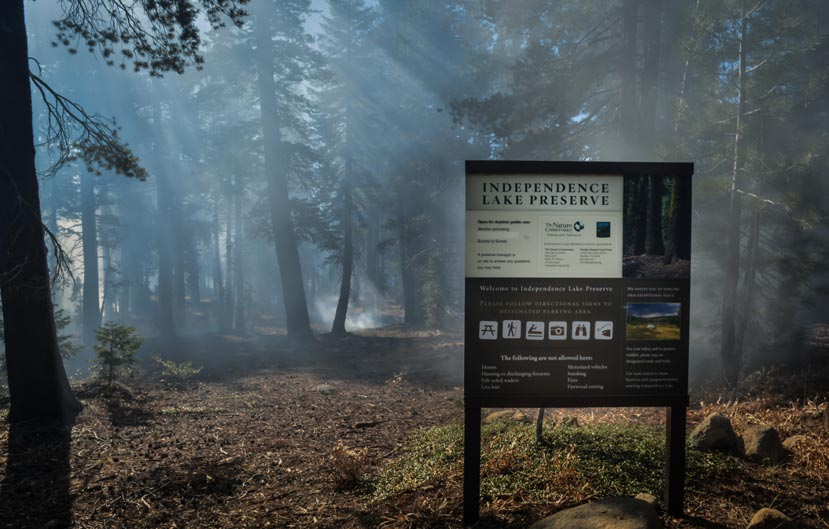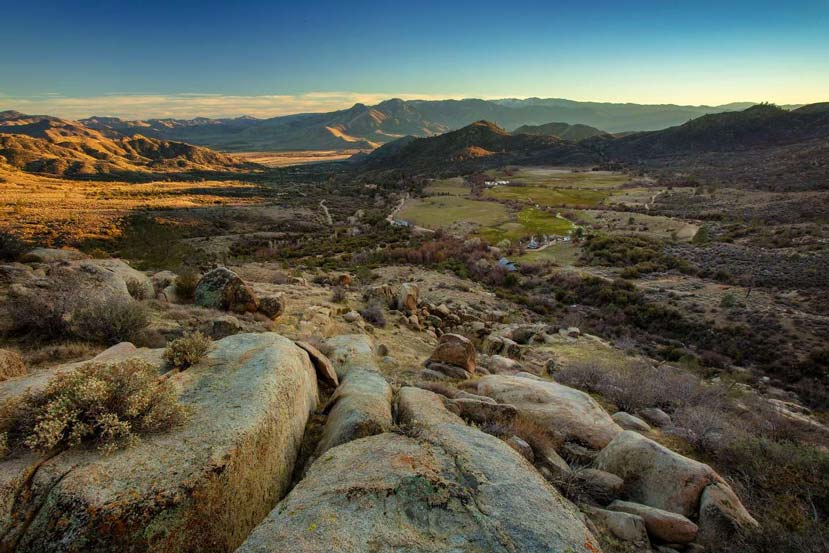
In 2022, California officially launched its strategy to protect 30 percent of the state’s lands and coastal waters by 2030. Known as 30×30, this initiative recognizes the global value of the state’s biodiversity and ecosystems. Since the 30×30 goal was announced, lawmakers have invested approximately $1.1 billion to advance the initiative’s three primary objectives: protect and restore biodiversity, expand access to nature, and mitigate and build resilience to climate change.
For the Sierra Nevada Conservancy (SNC), 30×30 represents an exciting statewide commitment to one of our core Watershed Improvement Program goals: strategic land conservation. Since its founding, SNC has funded many projects that align with the 30×30 effort. Ranging from the Oregon border to the mountains east of Bakersfield, these investments help protect high-priority lands and waters that possess unique natural characteristics, offer particular significance to tribes, are threatened by conversion, or provide critical resilience to climate change.
The statewide strategy to achieve the 2030 target is outlined in Pathways to 30×30, the recently developed roadmap for the effort. Pathways to 30×30 identifies ten strategic “pathways,” each of which is accompanied by specific actions. In pursuing these actions, the state is committed to a process that advances justice, equity, diversity, and inclusion; strengthens tribal partnerships; and sustains economic prosperity, clean energy resources, and food supply.
California has just seven years left to achieve its 30×30 goal. For SNC, investing in strategic, high-priority conservation initiatives across the Sierra-Cascade region will remain a priority until 2030—and for the foreseeable future beyond that.
Conservation projects in the Sierra-Cascade region
Here are some landmark projects aligned with the 30×30 goals that SNC has funded over the years, along with the 30×30 pathways that those projects have advanced.
Returning culturally and ecologically significant lands to Tübatulabal Tribal stewardship
30×30 pathways: Accelerate Regionally Led Conservation, Execute Strategic Land Acquisitions, Expand and Accelerate Environmental Restoration and Stewardship
California’s 30×30 initiative identifies the “return and ownership of ancestral lands to California Native American tribes” as a key principle for effective tribal partnerships.
As SNC seeks to strengthen its own partnerships with tribes and support tribal stewardship of ancestral lands, this principle has been top-of-mind. In December 2022, SNC’s Board approved a $1 million grant to Western Rivers Conservancy that will be used to purchase 2,274 acres of Fay Creek Ranch. Western Rivers Conservancy will transfer more than half of the land to the Tübatulabal Tribe for long-term stewardship as a working ranch.
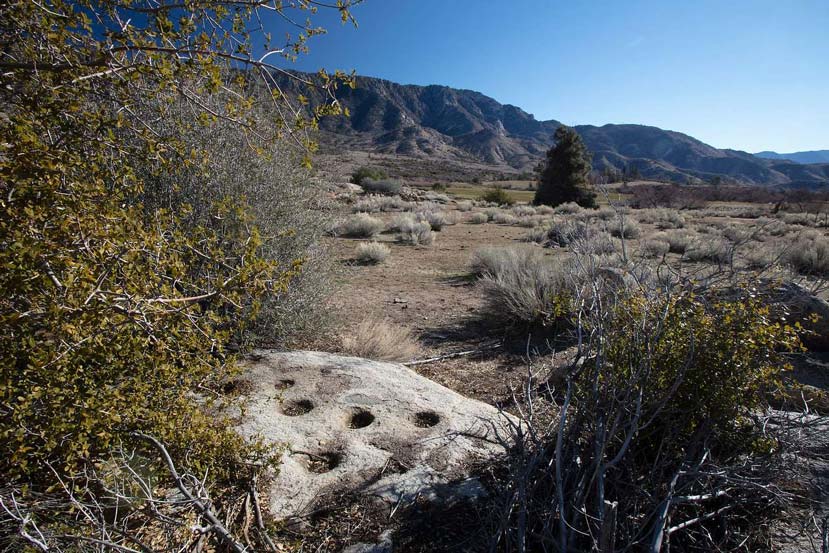
The area is known as Kolo kam’ap, or Duck Place, to the Tübatulabal Tribe for its importance as a wetland stop for migratory birds. This transfer will be the first time that culturally significant land has been returned to the Tribe. Tübatulabal oral history is rich in references to Kolo kam’ap, which was home to the Tribe for millennia, as evidenced by numerous bedrock mortars, obsidian chips, and other artifacts. Through the transfer, these cultural resources will be protected, and the Tribe will also have a private location for traditional activities, ceremonies, and repatriation of remains.
As the last large private holding in a vast swath of protected land, Fay Creek Ranch provides vital ecological values. Ranging from 2,500 to 4,800 feet in elevation, the ranch offers an increasingly important corridor for wildlife that may migrate upslope to seek refuge from heat. Year-round flowing water supports numerous birds and animals during spring and fall migrations, and protection from development threat will also benefit management of water resources that flow to the city of Bakersfield. Finally, the project will permanently protect public access to the Sequoia National Forest via two historic trailheads, which have been closed since 2000.
Large-scale strategic planning through a regional action plan
30×30 pathways: Accelerate Regionally Led Conservation, Align Investments to Maximize Conservation Benefits
As the Pathways to 30×30 strategy notes, “California’s approach to identifying areas to conserve should be purposeful, strategic, science-based, and most importantly, aligned with local conditions, communities, and economies.” In other words, what we conserve—and how we make those decisions—is as important as the act of conservation itself.
For this reason, in 2019, SNC granted $76,000 in Prop 68 funds to the Sierra Cascade Land Trust Council, a network of 14 local land trusts and six larger conservation organizations, to develop a Strategic Conservation Action Plan for California’s Sierra Nevada and Cascade region. The network used the funding to collaboratively identify conservation gaps and prioritize high value opportunities. The resulting Strategic Conservation Action Plan Report identifies seven strategic recommendations, along with associated actions, to help regional land trusts, state agencies, and other conservation funders focus investments on the most impactful projects.
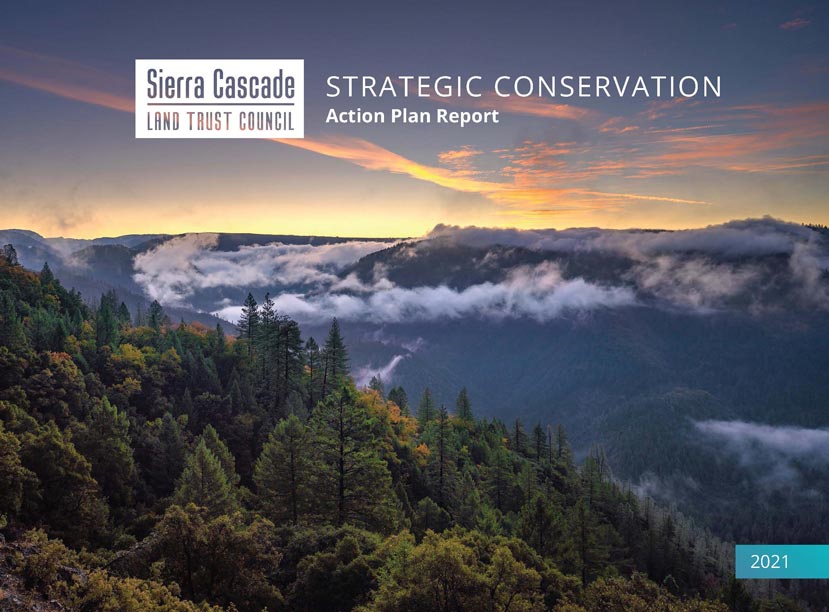
The Action Plan is accompanied by a prioritization tool, which provides a way to visualize and quantify conservation opportunities and benefits in the Sierra Cascade. The prioritization tool assesses conservation opportunities across six dimensions: natural lands, water resources, climate resilience, development threat, connecting people to the land (including where disadvantaged communities lack adequate outdoor access), and working lands. In addition to helping align investments with strategically identified and agreed-upon priorities, this tool has also brought increased capacity to local land trusts that do not have technical mapping capabilities.
Protecting sensitive species and increasing connectivity at Independence Lake
30×30 pathways: Accelerate Regionally Led Conservation, Execute Strategic Land Acquisitions, Expand and Accelerate Environmental Restoration and Stewardship
In 2010, using Prop 68 funds, SNC granted $1 million to The Nature Conservancy to support the acquisition of Independence Lake, a pristine alpine lake in Sierra County. A refuge for rare fish, Independence Lake is home to one of only two wild, self-sustaining lake populations of Lahontan cutthroat trout in the world—a federally-threatened fish that has been lost from 99 percent of its historic range. The lake also hosts populations of six other native Lahontan fishes, and the surrounding forest is home to other rare species, including the willow flycatcher, mountain yellow-legged frog, and Sierra Nevada Mountain Beaver.
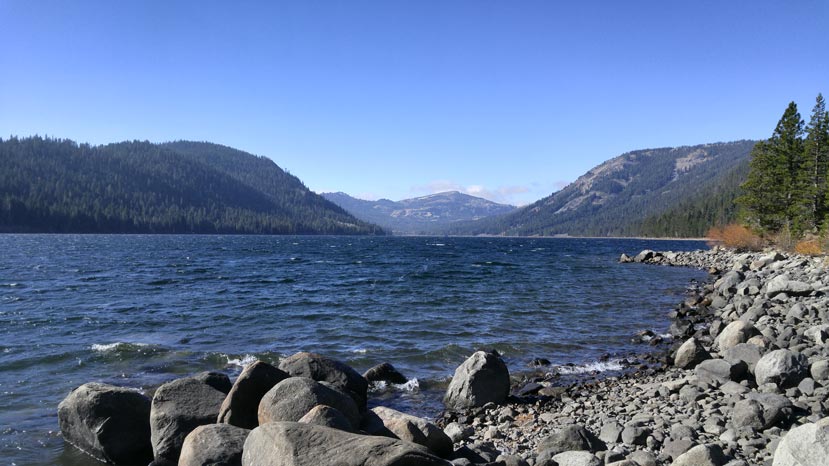
The Independence Lake project also represented important progress within the Sierra Nevada Checkerboard, a region of the central Sierra Nevada that is characterized by a patchwork of public and private land ownership. Closing the checkerboard-like pattern protects habitat connectivity for wildlife species, preserves sensitive wet meadows and riparian areas, and streamlines wildfire-risk reduction and response efforts.
The Nature Conservancy now manages Independence Lake as a preserve open to the public for a variety of outdoor activities. Since the initial acquisition, SNC has granted additional funding for forest restoration and management to reduce wildfire risk on the preserve, retain carbon stores, and protect the municipal water supply that flows out of Independence Lake.
